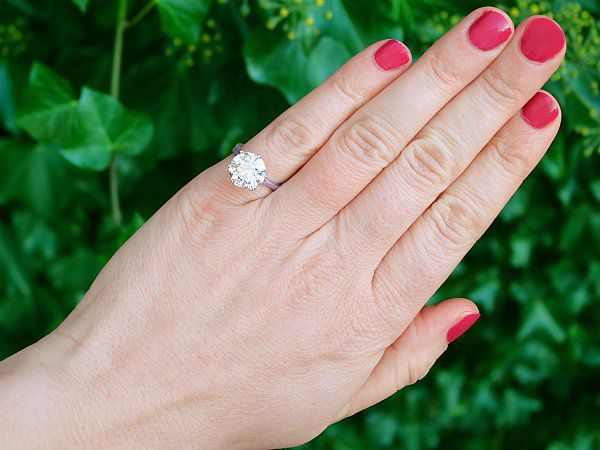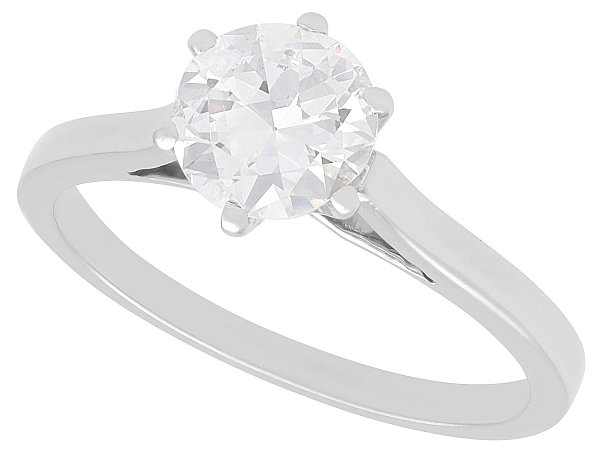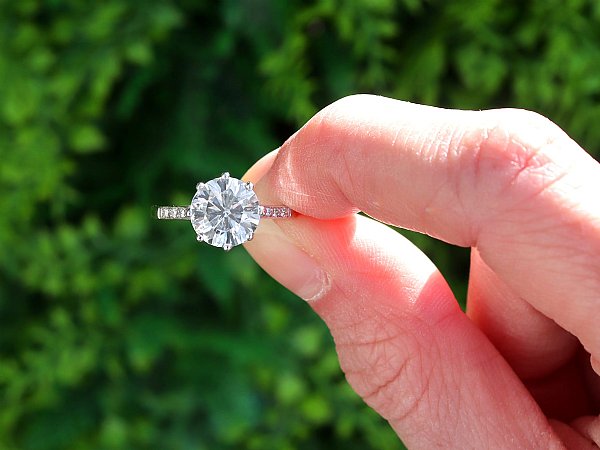Diamond Guide
Whether you are trying to choose an engagement ring or an imposing bracelet, a comprehension of diamond basics is essential. The four 'C's' may provide clearer information to the physical appearance and shape of the diamond; the balance of such factors will determine the cost of the gemstone.
The four 'C's' are: Cut, Colour, Clarity and Carat-Weight
Cut
For a diamond to display its true brilliancy and sparkle (scintillation) the stone must be cut and polished in such a fashion that the facets allow the maximum amount of light entering the diamond to be internally reflected and refracted before being dispersed back through the upper face (table) of the stone.
Diamond Colour Chart

Round
The round briliant cut diamond is by far the most popular choice of diamond shape at present.

Oval
The oval cut diamond may be considered as an elongated brilliant cut diamond. Traditionally it is set with two smaller diamonds to either side.

Princess
Is the most popular non-round diamond. It is a square or rectangular cut diamond with pointed corners.

Emerald
Emerald cut diamonds may be square or rectangular, but differ from Princess cut as the corners are tapered, and the pavillion (underside) has a faceted cut.

Asscher
The Asscher cut diamond is nearly identical to the Emerald cut except that it is square, with a total depth which is typically greater.

Radiant
A cross between a Round cut and an Emerald cut, the Radiant cut diamond is either square or rectangular in shape.

Marquise
Marquise cut diamonds are essentially twice as long as they are wide, with tapering points at either end.

Pear
These diamonds may be considered as a 'fusion' between Oval and Marquise cuts, with one border being rounded, and the other tapering to a point.

Baguette
The baguette cut first rose to prominence during the Art Deco period in the early 20th century. Rectangular in shape, these diamonds have neat facets which mirror the shape of the stone.

Cushion
Cushion cut diamonds have been popular since the early 20th century, taking on a cushioned shape that sits somewhere between a square and a circle. Particularly popular for halo style settings, cushion cut diamonds have become more common in the 21st century

Heart
Heart cut diamonds are complex to make, and the heart shape itself was perfected in the mid-20th century through advancements in laser-cutting gemstones. Diamonds with heart cuts are traditionally used for highly romantic jewellery

Old
The name old-cut is given to diamonds that were cut before the advancement of laser-cutting. Cut by hand, diamonds that are old-cut are rarely as 'perfect' as modern stones, but each stone is unique and has lots of character through this cut

Square
These diamonds may be considered as a 'fusion' between Oval and Marquise cuts, with one border being rounded, and the other tapering to a point.

Trilliant
The trilliant, or trillion, diamond cut is triangular in shape with subtly curving edges. Its name is derived of a portmanteau of triangular and brilliant. This cut rose to prominence in the late 20th century, being too difficult to create with significant brilliance before this period.
What Is the Best Colour for a Diamond?
Diamonds are created naturally in a wide variation of colours, but it is generally accepted that, in the world of fine jewellery, diamonds in the 'white' range are the most sought after, with a colourless stone being the highest grade.
The differences between these grades are incredibly subtle and take a trained eye to detect accurately!
The Gemological Institute of America (GIA) grades diamond body colour from D (colourless) to Z (light yellow):
Colourless
D,E,F
Near Colourless
G,H,I,J
Faint Yellow
K,L,M
Very Light Yellow
N,O,P,Q,R
Light Yellow
S,T,U,V,W,X,Y,Z
What Is the Best Clarity for a Diamond?
The clarity of a diamond is determined by the size, number and location of flaws or inclusions within the stone when viewed under 10x magnification.
The GIA grades clarity from flawless to imperfect/included 3 (see chart above for pictorial representation).
FL
Flawless
IF
Internally Flawless, minor surface blemishes
VVS1 and VVS2
Very Very Slightly Included
VS1 and VS2
Very Slightly Included
SI1 and SI2
Slightly Included
I1
Included1
I2
Included2
I3
Included3
Carat-Weight
The 'weight' of a diamond is measured in carats. As the carat weight of a diamond increases, so does its rarity; this will be reflected in the price.
One carat is composed of 100 'points'.
For example a diamond of 60 points weighs 0.60 carat and a diamond of 250 points weighs 2.50 carats.
So, the cost of a diamond is not only dependant on the size (carat-weight) of the diamond, but also on the diamond's natural qualities of colour and clarity. Finally the craftsman's skill in achieving the optimum cut allows the true beauty of any diamond to be revealled.
Diamonds are complex gemstones, however these four C’s are the best foundation. We hope your new understanding of these characteristics will help you chose and purchase diamond jewellery with more confidence.





